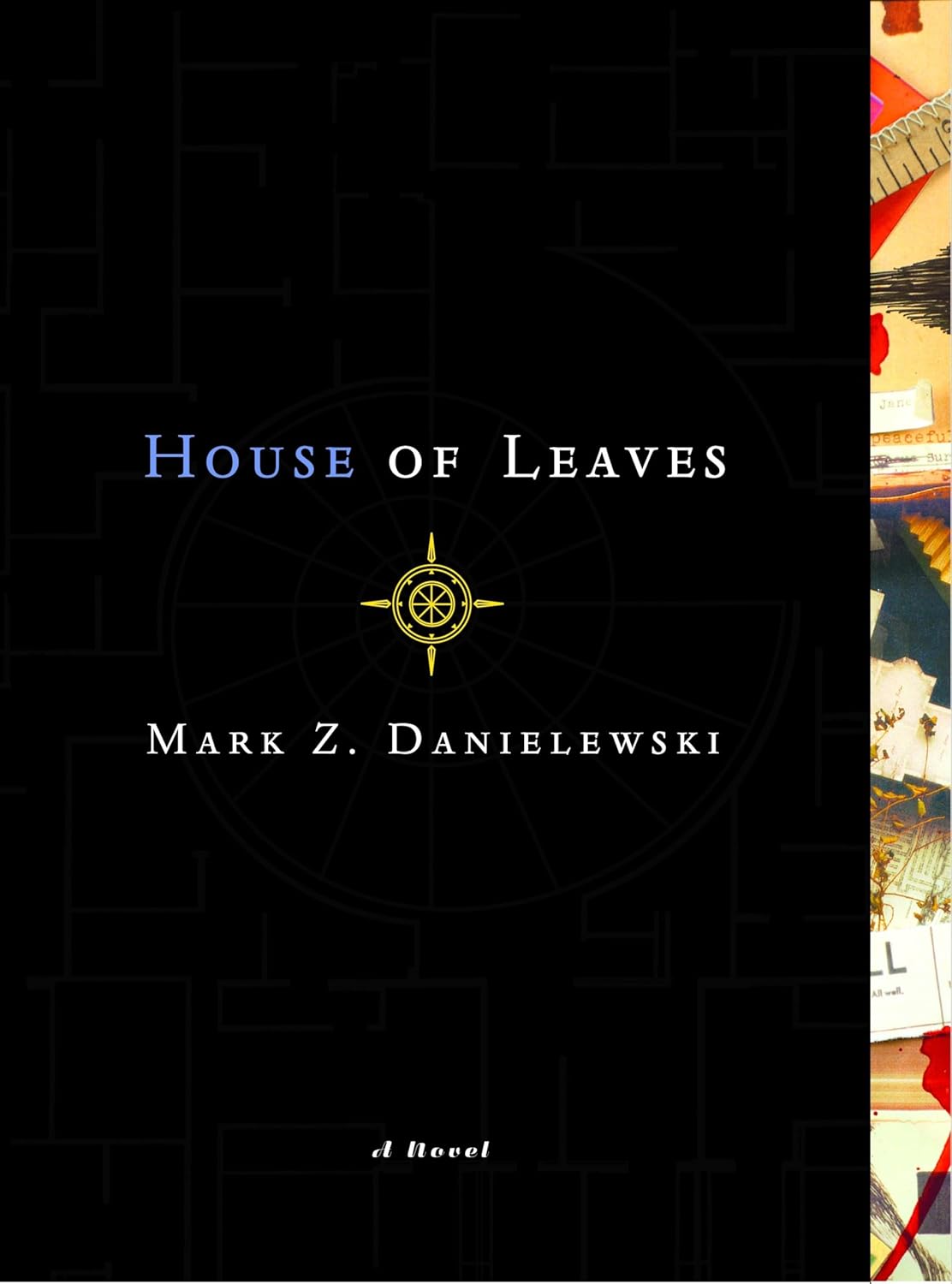Book Summary
House of Leaves is a genre-defying horror novel that layers multiple narratives into a disorienting, immersive experience. At its core is The Navidson Record, a documentary about a photojournalist whose new home defies physics—its interior expands into a nightmarish labyrinth. This “film” is dissected by Zampanò, a blind academic, whose notes are later compiled by Johnny Truant, a tattoo artist spiraling into madness. The result is a meta-textual puzzle where typography, footnotes, and even page layouts mirror the story’s creeping dread.
Danielewski’s debut polarizes readers: some hail it as a masterpiece of experimental fiction, while others find its complexity frustrating. Yet its unsettling atmosphere is undeniable. The house’s ever-shifting corridors become a metaphor for trauma, obsession, and the fragility of perception. Unlike conventional horror, the terror here is psychological, lingering long after the last page—especially when read in its intended print format, where visual distortions amplify the unease.
Key Themes
Unreality vs. Perception: The novel interrogates how we construct meaning, blurring lines between academic critique, fiction, and madness. Zampanò’s blind analysis of a nonexistent film and Johnny’s unreliable annotations force readers to question every detail. The house itself, with its impossible dimensions, embodies this theme—its horrors amplify the characters’ (and readers’) deepest fears.
Trauma and Obsession: Each narrator is haunted—Will Navidson by war photography, Karen by claustrophobia, Johnny by his mother’s institutionalization. The house magnifies these wounds, suggesting that trauma, like its halls, has no clear exit. Danielewski’s nested narratives mirror how pain distorts memory and narrative control.
What Makes It Unique
Form as Function: The book’s typographical chaos—upside-down text, mirrored passages, color-coded words—isn’t gimmicky; it’s essential. When Zampanò’s footnotes spiral into madness, so does the layout. Pages with a single sentence evoke the house’s vast emptiness, while dense blocks of text induce claustrophobia. This physical engagement makes the reader complicit in the unraveling reality.
Cult Legacy: Few books inspire such fervent analysis. From online forums decoding hidden messages to academic papers dissecting its structure, House of Leaves rewards (or punishes) deep engagement. Its influence stretches beyond literature, inspiring creepypasta like “The Backrooms” and multimedia art projects.
Reader Reactions
Reviews highlight its divisiveness: “A terrifying masterpiece” (The State Press) contrasts with “pretentious train wreck” (The Fiction Fox). Many praise its ambition: “The only book to ever make me feel physically lost” (Room Escape Artist). Others critique Johnny’s grating digressions: “His sex-and-drugs rants test patience” (Grimdark Magazine).
A common thread is obsession—readers describe compulsively annotating margins or scouring the internet for clues. Some admit abandoning it, only to return months later. As one reviewer notes, “It’s not for you… until it is” (Nottingham Horror Collective).
About the Author
Mark Z. Danielewski, son of Polish avant-garde filmmaker Tad Danielewski, grew up surrounded by artistic experimentation. His background in literature (Yale, Berkeley) and film informs House of Leaves’ hybrid style. The novel’s themes of familial dysfunction—particularly through Johnny’s mother’s letters—echo his own explorations of inherited trauma.
Danielewski’s later works, like The Familiar series, further push narrative boundaries, but House of Leaves remains his magnum opus. Its 2000 release coincided with early internet culture, fostering a grassroots fanbase that cemented its status as a millennial Codex Seraphinianus.
Memorable Quotes
“This is not for you.”
“The house is bigger on the inside than the outside.”
“Little solace comes to those who grieve when thoughts keep drifting as walls keep shifting.”
